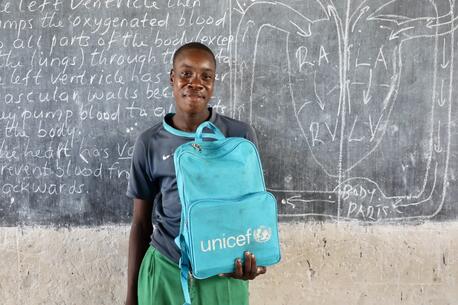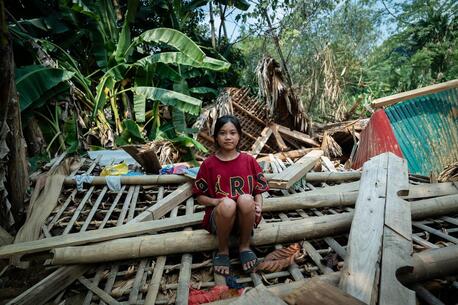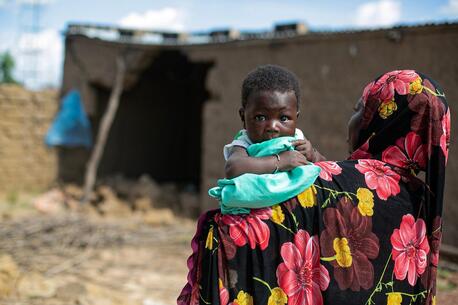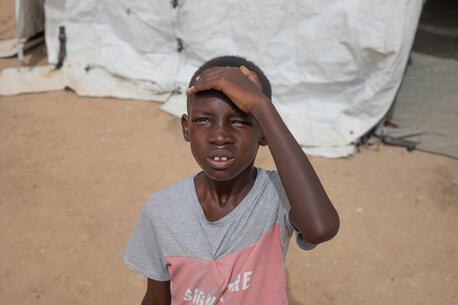
Climate Change and Children’s Health
Children are uniquely vulnerable to the hazards of climate change. And yet, they are often not considered in climate action plans and responses. UNICEF is working to ensure children's needs are at the forefront of the fight against climate change worldwide.
Children are disproportionately vulnerable to the effects of climate change
Climate change is a very real crisis — altering not only our planet but the lives and health of the world's children. From pregnancy to adolescence, climate change is impacting almost every aspect of child health and well-being.
Because they are uniquely vulnerable to climate-related hazards, children are disproportionately impacted compared to adults. While we may think of children as tiny adults, that’s simply not the case biologically. Their bodies are fundamentally different, and research shows that the health and development of children’s brains, lungs, immune systems and other critical functions are affected by the environment they grow up in.
While climate change impacts children worldwide regardless of geography, nearly half the world’s children — over 1 billion — live in countries that are at extremely high risk of the impacts of climate change.
The health impacts of climate change on children compound when they are exposed to overlapping climate-related hazards that often create or exacerbate other challenges. Here are a few examples of climate-related issues that children around the world are facing.
Extreme heat
Infants and young children are less able to regulate their body temperature, making them more vulnerable to the short- and long-term effects of heat stress. Their bodies heat up faster, they sweat less efficiently and they cool down more slowly. As a result, young children are more prone to dehydration and diminished sleep quality, which can affect mental health, and cognitive and physical development. Extreme heat is also linked to an increase in mental health problems, including post-traumatic stress disorder and depression, in children and adolescents.
For children dealing with other health issues like respiratory illness or intestinal disease, high temperatures only make things worse. Even in pregnancy, heat exposure can result in premature birth, low birth weight, stillbirth and congenital anomalies. Half of all children living in Europe and Central Asia are exposed to frequent heat waves as temperatures in those regions are rising at a faster rate than any other part of the world.
Drought
Increasing droughts often impact crop production and livestock, leading to a decline in household income and an increase in food prices. This combination results in food insecurity, water scarcity and malnutrition. In Brazil’s Amazon region for example, an estimated 115,000 children and adolescents living in indigenous villages and riverside communities are impacted by drought as of September 2024.
In addition to chronic and acute malnutrition risks, particularly for children 2-5 years old, drought also impacts community health services, with basic health care centers being forced to shut down due to water shortages. As of 2022, almost 750 million children worldwide were exposed to high or extremely high water scarcity.
Wildfires
Droughts create a breeding ground for wildfires, which pose an immediate risk to anything and anyone in their path. Exposure to far-reaching smoke from wildfires can be more hazardous, especially to children, than air pollution alone. In areas of Peru and Brazil, wildfires and the resulting waves of smoke have increased, causing many districts in the Amazon region to declare a state of emergency in September 2024.
Floods and storms
Climate-related extreme weather events, like floods, cyclones, typhoons and hurricanes, can cause a plethora of challenges for children. Health and social services are often impacted by storm damage, resulting in an increase in infections, mental health challenges and nutrition issues. According to UNICEF’s Children’s Climate Risk Index updated in November 2023, 40 million children have their education disrupted every year by climate-change related disasters, a number that continues to increase.
Air pollution
Children are uniquely vulnerable to air pollution. For example, children inhale more air per kilogram of body weight and absorb more pollutants relative to adults, all while their lungs, bodies and brains are still developing.
The State of Global Air 2024 report, released by the Health Effects Institute in partnership with UNICEF, finds that children under age 5 exposed to air pollution experience adverse health effects that can include premature birth, low birth weight, asthma and lung diseases.
Children who breathe polluted air are at higher risk of acute respiratory infections, including pneumonia — the largest infectious cause of death in children, responsible for 1 in 5 deaths globally. In East, West, Central and Southern Africa, the air pollution–linked death rate among children under 5 is 100 times higher than their counterparts in high-income countries.
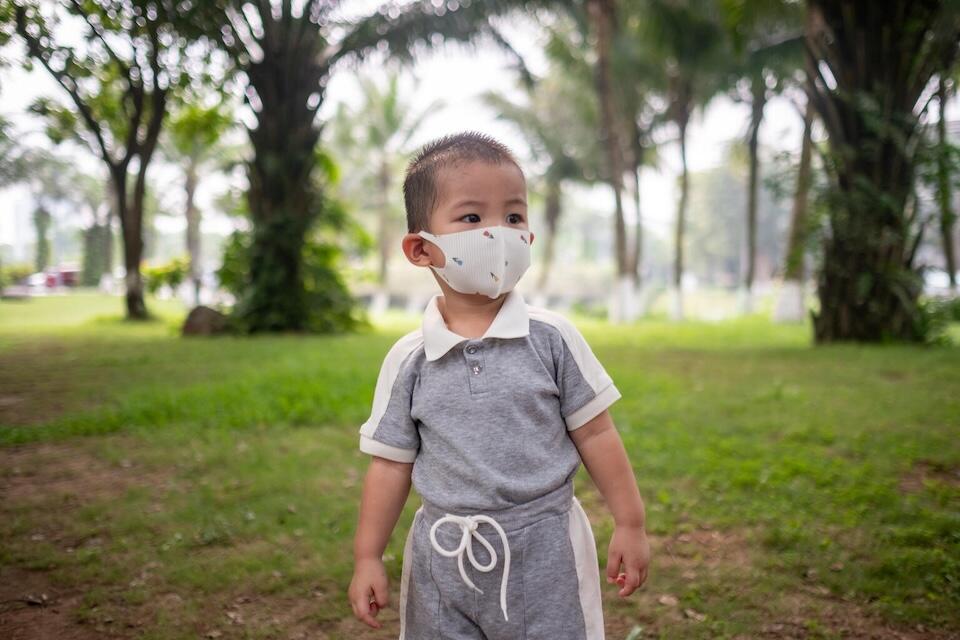
“Our inaction is having profound effects on the next generation, with lifelong health and well-being impacts. The global urgency is undeniable. It is imperative governments and businesses consider these estimates and locally available data and use it to inform meaningful, child-focused action to reduce air pollution and protect children’s health,” says Kitty van der Heijden, UNICEF Deputy Executive Director, Partnerships.
Changing ecosystems
In addition to all the hazards above, climate change threatens to disrupt the delicate balance of the world’s ecosystems, leading to shifts that impact all living things. Changing patterns of infectious diseases — including food- and water-borne diseases — and respiratory diseases can have serious impacts on children’s health.
"Despite the overwhelming evidence of the disproportionate impact of climate change on children, their needs, rights and perspectives remain inadequately reflected in the majority of climate policies, action and investment,” says van der Heijden.
UNICEF’s climate action aims to mitigate the devastating effects of climate change on children’s health
Children worldwide bear the greatest burdens of climate change despite being the least responsible for this global emergency.
As part of its response to the climate crisis, UNICEF created the Sustainability and Climate Change Action Plan 2023-2030. Solutions to the fight against climate change can’t be achieved by any one individual, organization, government or business. Effective climate action requires unprecedented global partnerships to achieve a level of impact that no single entity could achieve alone.
That’s why UNICEF’s Action Plan is designed to galvanize a global commitment, by accelerating partnerships with governments, United Nations agencies, the private sector and civil society to ensure a sustainable world and to protect the most vulnerable children from the worst impacts of a changing climate and degrading environment.
The Action Plan consists of three main objectives designed to prioritize the needs of children:
- PROTECT the lives, health and well-being of children and the resilience of their communities by adapting essential social services to a changing climate, more frequent disasters and a degrading environment
- EMPOWER every child with the developmental opportunities, education and skills to be a champion for the environment
- REDUCE the emissions and environmental footprint within UNICEF, support its global network of partners to do the same, and advocate for the fulfillment of ambitious international sustainability and climate change agreements
With these goals in mind, UNICEF’s climate, disaster risk reduction, environment and energy activities work to put children first in the sustainability plans, budgets and actions of governments and business partners.
UNICEF also works to strengthen the resilience and continuity of social services in the face of climate and environmental impacts, including humanitarian aid in response to climate-related disasters. This climate action work encompasses all sectors: education, health, nutrition, water, sanitation and hygiene (WASH), child protection and social policy.
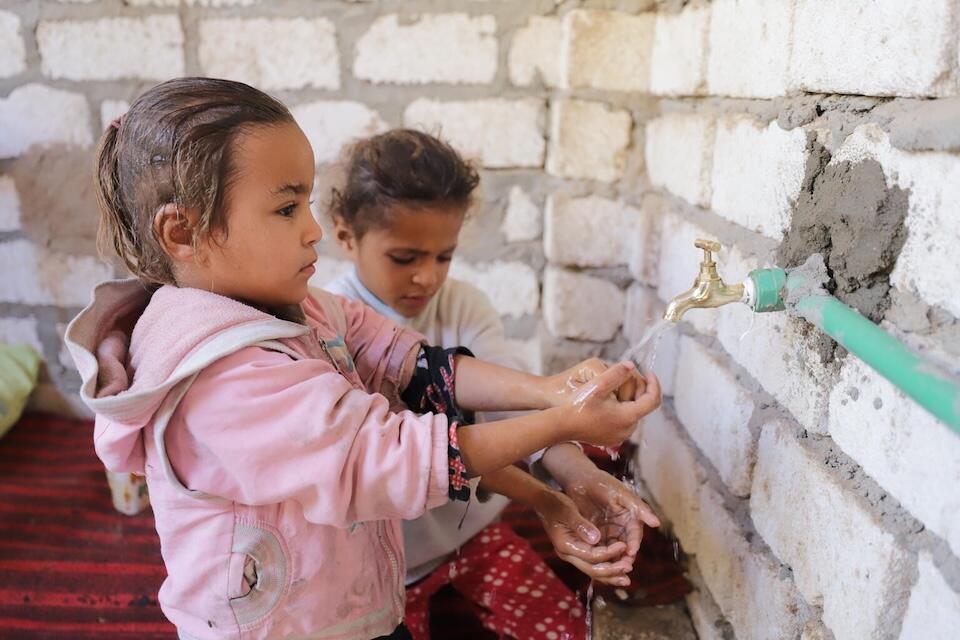
One example of this work is the NDCs for Every Child Data Platform, which tracks the inclusion of children and young adults in Nationally Determined Contributions (NDCs), documents outlining efforts by each country to reduce emissions and adapt to the climate crisis in accordance with the Paris Agreement.
There is still more work to be done in this area — as of September 2024, less than half of current NDCs globally were considered child- and youth-sensitive, and only 3 percent were developed with children's participation.
Another example of UNICEF’s climate action work is the innovative Today & Tomorrow Initiative, launched in 2022, aiming to increase financing for climate resilience building, emergency preparedness, disaster response and risk reduction work in eight cyclone-prone countries — Bangladesh, Comoros, Haiti, Fiji, Madagascar, Mozambique, Solomon Islands and Vanuatu. In 2023, the initiative released more than $4 million in insurance payouts triggered by cyclones in seven of the eight countries covered. After the pilot phase, the approach is expected to scale to more countries and utilize risk financing tools to cover other hazards, such as earthquakes, floods and drought.
In 2015, UNICEF, along with the World Health Organization (WHO) and The Lancet, founded the Lancet Commission on Health and Climate Change to map the impacts of climate change and recommend policy responses to protect global health. The Commission’s 2020 report, A Future for the World's Children?, identified threats to children's health and well-being, including climate change and ecological degradation.
The Lancet Commission also creates an annual report called The Lancet Countdown, tracking the relationship between health and climate change based on the work of over 120 experts from academic institutions and UN agencies. The 2024 report of the Lancet Countdown revealed a grim reality that the world is facing record-breaking threats from delayed action on climate change.
On the African continent, where the population of children continues to grow and by 2100 is projected to be the world's largest, UNICEF is calling for increased investments in climate action and resilience efforts. Climate action designed to affect the early years of child development boasts a return on investment of $13 for every $1 spent, making these investments one of the most cost-effective ways to create brighter futures for young children and entire societies.
In Europe and Central Asia, where temperatures are rising at the fastest rate worldwide, UNICEF works with governments, partners and communities to build resilience against increasing heat waves. This includes equipping teachers, community health workers and families with the skills and knowledge to respond to heat stress, as well as advocating for youth engagement in designing heat action plans and developing cooler community spaces.
Protecting children's health and fundamental rights: the time to act is now
In September 2024, the UNICEF Executive Board held its first-ever special focus session on climate change and children, bringing together government officials and youth advocates to discuss the issue and work together to find and implement solutions.
As climate change continues to negatively impact children’s health, the world finds itself at a crossroads. Children and their fundamental rights need to be at the center of climate action across the globe so that future generations have the opportunity to survive and thrive.
Support UNICEF climate action for children. Donate today.
